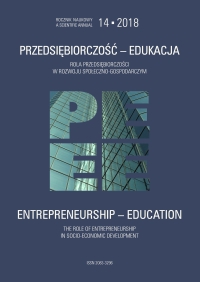New Side of Upper Silesia in Light of Revitalisation Processes
DOI:
https://doi.org/10.24917/20833296.14.8Keywords:
post-industrial areas, revitalisation, Upper SilesiaAbstract
Post-industrial facility restructuring processes redefining the functionality of urban and old industrial space, have taken place in Western Europe since the 1960s and constitute one of the most significant economic phenomena nowadays. In our country, the results are most vivid in Upper Silesia and the industrial city of Łódź. Upper Silesia, the most considerable concentration of mining, steel, engineering and chemical industries, has been restructuring and innovating its industries for nearly 30 years. It is connected with closing of the old post-industrial facilities which become subject to revitalisation and, frequently, are given new socio-economic functions. Other devastated and damaged facilities and spaces are also subject to such processes - former historical and architectural values are restored for them. In this paper, the emphasis is put on a diagnosis of the various types of post-industrial and other Upper Silesian facilities subject to revitalisation. Moreover, possible directions of development and adaptation to new functions have been indicated. Examples of various revitalisation results have been mentioned for such GOP (Upper-Silesian Industrial Region) facilities as: coal mines, steel-works, factories, engineering plants, as well as post-industrial waste-ground. The paper also identifies the most significant output of the already completed projects which results in the change of the functional structure of Upper Silesia and creates its new socio-economic image. One of the directions of this industrial region’s transformation is tourism which makes Upper Silesia an area of a unique and most powerful concentration of facilities demonstrating the former industrial, cultural and civilisational traditions - unexampled on the national or European scale.
References
Antonowicz, P. (2011). Przekształcenia terenów poprzemysłowych w województwie śląskim. W: Z. Nowak, J. Mańka (red.), Rewolucja przemysłowa na Górnym Śląsku. Poczet Gwarków Śląskich, z. 3. Katowice: Wydawnictwo „Śląsk”, 59–64.
Gasidło, K. (1998). Problemy przekształceń przestrzeni terenów poprzemysłowych. Zeszyty Naukowe. Architektura, 37.
Gasidło, K. (2013). Przekształcenia terenów obiektów poprzemysłowych jako problem urbanistyczno-architektoniczny województwa śląskiego. Zeszyty Naukowe. Architektura, 52, 65–80.
http://marinagliwice.pl/strona-glowna/marina-miejsca-do-cumowania
https://pl.wikipedia.org/wiki/Silesia_City_Center#/media/File:Katowice_-_Silesia_City_Center_(2).jpg
http://rewitalizacja.silesia.org.pl/img_projekty/1.obraz_z_lotu_ptaka_-przed.jpg
Jędrysiak, T. (2011). Turystyka kulturowa. Warszawa: Polskie Wydawnictwo Ekonomiczne.
Lamparska, M. (2017). Turystyka wśród górniczych szybów. Katowice: Wydawnictwo Naukowe „Śląsk”.
Ogólnodostępna Platforma Informacji. Tereny poprzemysłowe i zdegradowane, http://opitpp.orsip.pl/ imap/
Ostręga, A., Uberman, R. (2010). Kierunki rekultywacji i zagospodarowania – sposób wyboru, klasyfikacja i przykłady. Górnictwo i Geoinżynieria, 34(4), 445–461.
Szejnert, M. (2007). Czarny ogród. Kraków: Wydawnictwo Znak.
Szołtysek, M. (1998). Śląsk, takie miejsce na ziemi. RWybnik: ydawnictwo Śląskie ABC.
Śmietana, K., Zagórska, E. (2006). Rewitalizacja zabudowy i terenów poprzemysłowych na Górnym Śląsku. Analiza zmian sposobów użytkowania nieruchomości – studia przypadków. Materiały konferencyjne II Śląskiego Forum Rewitalizacji. Katowice.
Wagner, T. (2005). Wybrane przykłady adaptacji obiektów poprzemysłowych na terenie Górnego Śląska. W: Bogactwo dziedzictwa przemysłowego jako wyzwanie i atrakcyjny produkt dla turystyki i rekreacji. II Konferencja międzynarodowa. Katowice: Górnośląska Wyższa Szkoła Handlowa im. Wojciecha Korfantego, 249–256.
Downloads
Published
How to Cite
Issue
Section
License
Articles are published under the terms of the Creative Commons License (CC BY-ND 4.0; Attribution– NoDerivs).

